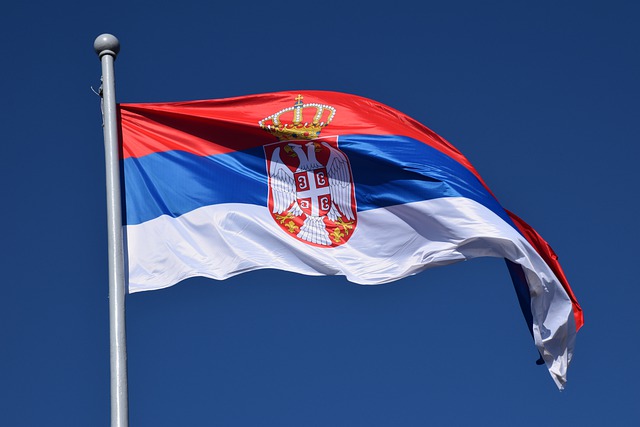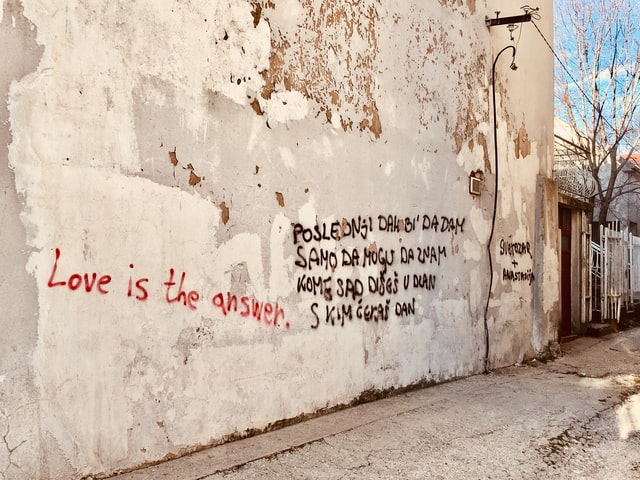Written by: Olivera Tolimir
So, you’ve decided to learn Serbian. Congratulations! Whatever your reasons are, you’re at the beginning of an exciting journey! But what do you know about the language you’re starting to learn? Where’s it spoken? How many people use it? What language family does it belong to? Is it difficult? We’re here to help you find answers to all of these questions and more!

Language Family
Serbian belongs to the Slavic language family. Slavic (or Slavonic) languages originate from the Indo-European language. The Indo-European language family is divided into more language families, such as Romanic, Germanic, Hellenic, Balto-Slavic, Indo-Iranian, etc. As you can see, Slavonic languages are considered most related to the Baltic ones.
Slavic languages are divided into three groups: South, East, and West Slavic languages. Serbian belongs to the South group, as well as the Croatian, Bosnian, Montenegrin, Slovene, Bulgarian, Macedonian, and Old Church Slavonic. The first five belong to the Western South Slavic languages, while the Bulgarian, Macedonian, and Old Church Slavonic belong to the Eastern South Slavic languages. The Old Church Slavonic is today used only in church during the liturgy.
But how different are all these languages? Can you understand Bosnian if you learn Serbian? How about Bulgarian? Let’s see!
The similarity of Serbian with Other South Slavic Languages
Let’s see how we say “Chocolate is tasty” in all of the mentioned languages! We’ll exclude Old Church Slavonic since it’s not used in communication.
- Serbian: Čokolada je ukusna. / Чоколада је укусна. (It’s the same, only written using both of our scriptures.)
- Montenegrin: Čokolada je ukusna.
- Bosnian: Čokolada je ukusna.
- Croatian: Čokolada je ukusna.
- Slovenian: Čokolada je okusna.
- Macedonian: Чоколадото е вкусно.
- Bulgarian: Шоколадът е вкусен.
Are you surprised? It makes sense that the languages of the same origin are similar, but this much? There’s an explanation.
Serbian, Montenegrin, Bosnian, and Croatian are, linguistically speaking, the same language. All four languages are official in their perspective countries (Serbia, Montenegro, Bosnia and Herzegovina, and Croatia). It means we officially have four different languages with differences so minor that sometimes two people speaking the same language, but a different dialect, understand each other less than two people speaking different languages!

The cause for this unusual situation is the pluricentric former Serbo-Croatian language. It was the official language of the former Yugoslavia. When this federal republic fell apart, all countries it consisted of decided to codify and name their official language, and all these languages are derived from the Serbo-Croatian.
The last three languages are also similar to Serbian, but there are enough differences that we need to learn and practice these languages if we want to communicate effortlessly.
So, how many people will understand you once you learn Serbian? You’ll find out in the next paragraph!
Number of Speakers of the Serbian Language
Approximately 12 million people speak Serbian worldwide. But if you wonder how many people you’ll be able to communicate with when you learn Serbian, that number gets higher! Around 30 million people in the world speak Serbian, Bosnian, Montenegrin, and Croatian.
Since we all understand each other perfectly, Serbian will come in very handy when you come to the Balkans! You’ll be able to explore Serbia, Montenegro, Bosnia and Herzegovina, and Croatia and find friends in all those countries by learning only one language! Convenient, right?
Is it Difficult to Learn Serbian?
Now that you’ve learned something about the origins of the Serbian language and its relatives, let’s talk about its nature! We’ve already written about the difficulty of the Serbian language and its grammar. Since we already focused on its complicated parts, let’s talk about some easy ones!
Alphabet
As we already mentioned, the Serbian alphabet is quite easy – one letter always represents one sound. So, you can learn Serbian Latin letters in two afternoons!
Noun Gender
To learn Serbian, you have to remember it has three genders (masculine, feminine, and neuter). If you’ve ever tried to learn German, we now expect the justified, “Didn’t you say we’ll talk about easy parts of Serbian?!” question. Let us put a smile on your face! In 95% of the cases, you’ll be able to recognize a gender of a Serbian noun as soon as you see (or hear) it. You don’t have to learn genders by heart. In Serbian, it’s easy because most of the nouns of the feminine gender end in -a, masculine ones end in a consonant, and neuter ones in -e or -o.
Let’s illustrate this rule. If you look at these random ten nouns, we guarantee you’ll know to attribute them to their correct gender:
selo, mama, ime, pas, stolica, dete, kamin, sveća, zid, ogledalo.

If you understood the rule about the gender depending on the ending of the noun, you probably solved the problem like this:
- masculine gender: pas, kamin, zid (s, n, and d are all consonants)
- feminine gender: mama, stolica, sveća
- neuter gender: selo, ime, dete, ogledalo
Conjugation
We’ve written a bit about the Serbian Present Tense. It’s complicated when you start learning it, but the good news is – there’s only one Present Tense in Serbian! For absolute beginners in English, it’s usually a challenge to understand when to use Present Simple and when Present Continuous. At least in Serbian, you don’t have to think about whether you’re talking about a habit or a current action. Just use the good old prezent (Present Tense)!
We’ll talk about the ways to express future or past actions in our future blog texts, but for now, look at the basic forms of the verbs work, sleep, and drink in Serbian.
- to work – raditi
- to sleep – spavati
- to drink – piti
Now we’ll make sentences I’ll work, I’ll sleep, and I’ll drink. Since we’re talking about future actions, we’ll use Serbian futur (Future Tense).
- Radiću.
- Spavaću.
- Piću.
Can you see the pattern? We just removed the last two letters (-ti) from the infinitive (basic form) and added -ću. The ending -ću contains the meaning of the English I will.
These are some basic information you should be familiar with before you start to learn Serbian. Did you find it useful? What else would you like to know about the Serbian language?



